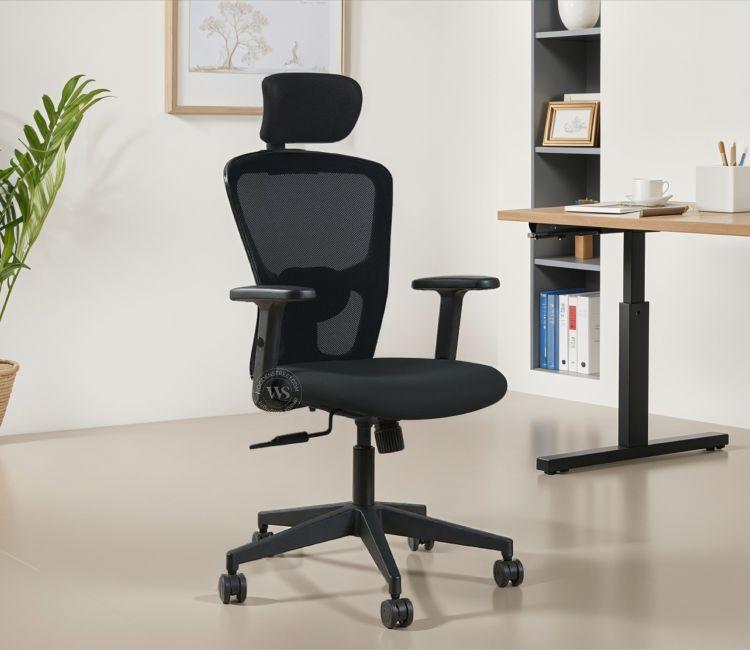The Importance of an Ergonomic Chair for Office Productivity

Modern work culture has transformed drastically over the years, with a large percentage of professionals spending long hours seated at their desks. This shift makes workplace comfort and efficiency more critical than ever. Among the many factors that contribute to productivity, one often overlooked yet highly influential element is the seating arrangement. An office ergonomic chair plays a crucial role in shaping not only physical well-being but also mental focus and long-term efficiency.
The Connection Between Comfort and Productivity
When employees are seated uncomfortably, distractions are inevitable. Constantly shifting positions, dealing with back pain, or experiencing stiffness can significantly reduce focus on important tasks. An ergonomic chair is specifically designed to support the natural posture of the body, ensuring that long working hours do not compromise health. By offering lumbar support, adjustable features, and a balanced seating experience, it allows individuals to concentrate more effectively on their work without physical discomfort pulling their attention away.
Supporting Proper Posture
One of the most significant advantages of an office ergonomic chair is its ability to encourage proper posture. Many standard chairs fail to provide the right alignment, leading to slouching, strained shoulders, and pressure on the spine. Over time, this poor posture results in chronic issues like back pain, neck stiffness, and reduced mobility. Ergonomic chairs counter these problems by aligning the spine correctly, keeping the feet firmly placed on the ground, and ensuring that arms and wrists remain at a comfortable angle. This alignment not only prevents long-term health issues but also helps employees remain energetic and active throughout the day.
Reducing Health Risks
Sitting for extended periods is often linked with several health concerns, including cardiovascular problems, obesity, and musculoskeletal disorders. While standing desks and movement breaks are effective solutions, a practical and immediate improvement comes from using ergonomic seating. An office ergonomic chair minimizes pressure points on the body, encourages micro-movements, and provides necessary adjustments to suit different body types. These benefits reduce the risks of repetitive strain injuries and promote better circulation, allowing employees to feel less fatigued and more motivated.
Enhancing Employee Morale
Physical comfort goes hand in hand with psychological well-being. When organizations invest in ergonomically designed furniture, they send a strong message that employee health and comfort are valued. This not only improves morale but also creates a more positive and engaging work atmosphere. Workers who feel supported are less likely to experience burnout and more likely to maintain higher levels of job satisfaction, which ultimately contributes to better productivity and lower turnover rates.
Long-Term Cost Benefits
While ergonomic chairs may require a higher initial investment compared to standard office seating, they bring substantial cost savings over time. By reducing health-related absences, minimizing compensation claims for workplace injuries, and enhancing efficiency, they prove to be a cost-effective solution. Organizations that prioritize ergonomics are often able to sustain a healthier workforce, leading to fewer disruptions and more consistent performance across teams.
Adapting to Modern Work Styles
Workplace dynamics are evolving, with many employees now operating in hybrid or fully remote setups. Regardless of the location, maintaining a healthy work posture is essential. An ergonomic chair provides flexibility and adaptability for various working styles, whether it involves long video conferences, collaborative tasks, or focused independent work. Its adjustable height, tilt, and support features ensure that every individual can tailor their seating arrangement to match their specific needs, reducing strain and improving efficiency.
The Role of Ergonomics in Future Workplaces
As organizations continue to understand the importance of employee wellness, ergonomic solutions are becoming a central element in office design. Chairs that integrate modern ergonomics are no longer considered a luxury but a necessity. They represent a long-term investment in the productivity, well-being, and overall success of a workforce. With advancements in technology and growing awareness of health concerns, ergonomic chairs will likely remain a cornerstone of future workplaces, helping employees achieve their full potential without compromising their health.
Conclusion
Workplace productivity is influenced by multiple factors, but comfort and health form the foundation of sustained efficiency. An office ergonomic chair ensures that employees can work longer hours with reduced strain, improved posture, and greater focus. Beyond physical benefits, it also boosts morale and demonstrates an organization’s commitment to employee welfare. By adopting ergonomically designed seating, both individuals and businesses stand to gain improved performance, healthier lifestyles, and long-term success in an increasingly competitive professional environment.





